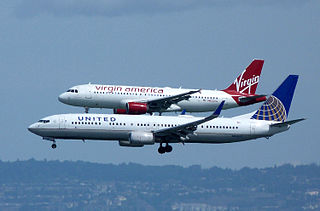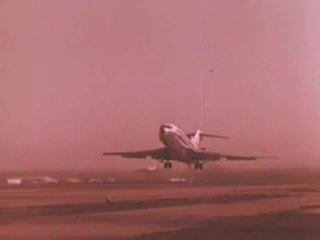
The Breguet 14 was a French biplane bomber and reconnaissance aircraft of the First World War. It was built in very large numbers and production continued for many years after the end of the war.
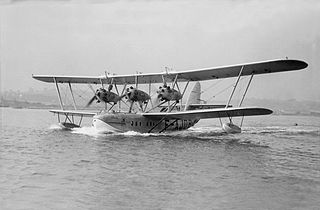
The Short Calcutta or S.8 was a civilian biplane airliner flying boat made by Short Brothers.

The Aero A.38 was a Czechoslovakian biplane airliner of the 1920s and 1930s. Following the relatively modern A.35, this aircraft was something of a throwback, marrying a fuselage derived from the A.35 to wings copied from the A.23. A few served with CSA, and others with French airline Compagnie Internationale de Navigation Aérienne. These latter aircraft were powered by a French Gnome-Rhône engine instead.
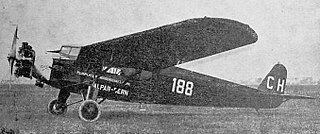
The Fokker F.IX was an airliner developed in the Netherlands in the late 1920s, intended to provide KLM with an aircraft suitable for regular services to the Dutch East Indies. When the onset of the Great Depression forced the postponement of those plans, the market for this aircraft disappeared as well, although it did see military service in Czechoslovakia as a bomber.
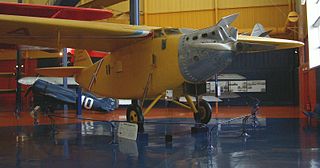
The Bernard 190 or Bernard-Hubert 190 was a French airliner of 1928. It was a high-wing cantilever monoplane of conventional configuration, based on the Bernard 18. Compared with its predecessor, it kept the same basic design but featured redesigned tail surfaces, an enlarged cabin, and offered its flight crew a completely enclosed cockpit. Also like its predecessor, the basic airliner model provided the basis for a long-range aircraft to be used in record attempts, the 191GR.
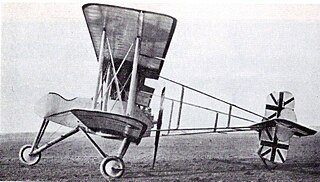
This article is about an aircraft of World War I. For the pre-war design of the same designation, see Breguet Type IV.

The Breguet 16 was a bomber biplane produced in France toward the end of World War I.

The Breguet 390T, 392T and 393T were a family of French propeller-driven airliners of the mid-1930s.
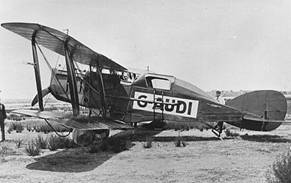
The Bristol Tourer was a British civil utility biplane produced in the years following the First World War, using as much as possible from the design of the Bristol Fighter aircraft. Bristol Tourers were delivered with a variety of engines, subject to availability and customer desires; these included the Rolls-Royce Falcon, Siddeley Puma, Hispano-Suiza 8, and Wolseley Viper. Many Tourers were fitted with a canopy to cover the one or two passenger seats in the rear cockpit, giving the type its original name of Coupé. The pilot's cockpit, however, remained open.
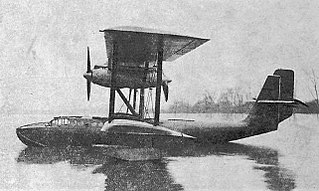
The CAMS 53 was a transport flying boat built in France in the late 1920s. Building on the experience gained from the unsuccessful CAMS 51, Maurice Hurel designed an aircraft of similar size and capacity for Aéropostale. The company bought four aircraft straight away for use on its Marseilles-Algiers route, and Air Orient purchased another two. More CAMS 53s were soon ordered by these operators as well as Air Union, and the aircraft were used to link Marseilles with Ajaccio and Beirut. When the various French airlines were absorbed into Air France in 1933, some 25 CAMS 53s were still in operation and continued in use until 1935.

The CAMS 55 was a reconnaissance flying boat built in France in the late 1920s which equipped the French Navy throughout the 1930s.

The Caproni Ca.101 was a three-engine Italian airliner which later saw military use as a transport and bomber. It was designed in 1927 and first flown in 1928.
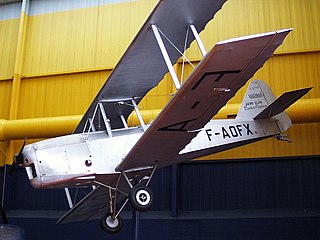
The Caudron C.270 Luciole ("Firefly") was a sporting, touring and trainer aircraft produced in France in the 1930s, derived from the C.230.

The Focke-Wulf A 38 Möwe was an airliner, produced in Germany in the early 1930s. It was a final development of the family of designs that commenced with the A 17 in 1927. The A 38 used the same high-mounted, cantilever wing as the A 29, but mated this to an all-new fuselage design with enclosed seating for ten passengers and three crew. Unlike earlier members of the family, the flight deck was not joined to the cabin, separated now by a lavatory and baggage compartment. The main undercarriage was strengthened and the mainwheels fitted with brakes, while the tailskid was replaced with a tailwheel. All four A 38s were originally fitted with Siemens- or Gnome et Rhône-built Bristol Jupiter engines, but in April 1933, all aircraft were refitted with Siemens Sh 20 powerplants. By mid-1934, they had been relegated to training duties.

The Gourdou-Leseurre GL.30 was a racing aircraft built in France in 1920 which formed the basis for a highly successful family of fighter aircraft based on the same design.

The Hanriot H.170, H.180, and H.190 were a family of light utility aircraft produced in France in the 1930s. All introduced in 1934, they appeared side-by-side at the Paris Air Show that year, the model numbers distinguishing between versions powered by Salmson, Renault, and Régnier engines respectively.

The Bristol Seely was entered into an Air Ministry competition for safe civil aeroplanes held in 1920. It was a single-engine biplane with accommodation for one passenger. After the competition, the single Seely was used as a testbed for the Bristol Jupiter engine development programme.

The Breguet 470 Fulgur was a French airliner of the 1930s. Only a single example of the twin-engined monoplane was built, this being sold to the Spanish Republican government during the Spanish Civil War.
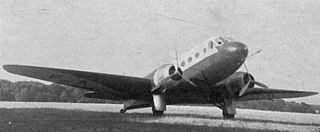
The Breguet 670, Breguet 670T or Breguet-Wibault 670 was a French twin engine, all metal eighteen seat airliner with a retractable undercarriage flown in 1935. Only one was built.



